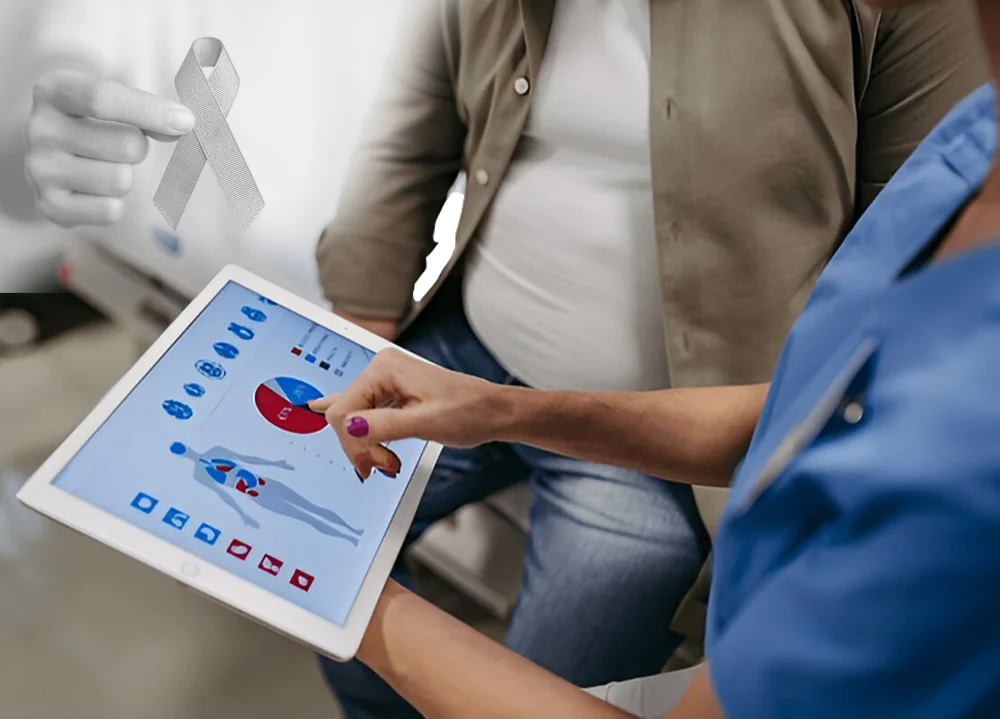

What’s Your Cancer Risk Score? You Might Be Shocked by the Results!
- Cancer Risks Are Never Random
- Cancer Risk Scores Are Real, And They're Growing in Use
- Where the Numbers Regarding Cancer Get Real
- What a High Cancer Score Actually Means
- You Can't Change the Cancer Score You Don't See
- How Genetic Testing Helps Calculate Cancer Risk
- What genetic testing actually looks for:
- Why this matters before cancer symptoms appear:
- Leverage Genetic Testing to Understand Cancer Risks
Ask someone how likely they are to get cancer, and the answer usually depends on how they feel, what they eat, or who in their family has had it. Rarely does it reflect actual risk. In fact, studies show that a majority of adults either overestimate or underestimate their cancer risk, especially when there are no symptoms.
Cancer rarely starts with symptoms. It starts with a system failure. DNA stops repairing itself properly. Cells divide when they should shut down. Growth signals overpower the body’s natural limits. By the time a tumor forms, that quiet process has been running for years.
Cancer Risks Are Never Random
Your personal cancer risk depends on the systems your body was born with, and the choices you make as they weaken. Some people carry inherited mutations that push their baseline risk far higher than average without warning. Others add risk gradually through lifestyle: smoking, inactivity, alcohol, diet, or toxic exposures.
But here’s the catch: even perfect habits can’t cancel inherited mutations. And inherited mutations often cause no symptoms for decades. That’s why personal cancer risk is now being measured using composite scores. Some tools combine genetic data, family history, and behavioral patterns to show the real risk most people never see coming.
Cancer Risk Scores Are Real, And They're Growing in Use
Several research-backed tools now assign numerical values to cancer risk. These scores are specific, evidence-based, and in many cases, deeply personal.
- The Cancer Risk Calculator by Cancer Council Australia gives a lifestyle score out of 100 based on how your daily choices align with prevention guidelines.
- ACS CancerRisk360 evaluates screening behavior, family history, and personal habits to assess overall cancer preparedness.
- Your Disease Risk from Washington University compares your personal profile to population averages and shows how to lower it.
Each tool works a little differently. Some output lifetime risk percentages. Others give relative scores (“above average,” “much higher than normal”). A few integrate genetic results when available. What they share is a hard truth: your real risk won’t announce itself. You have to go looking for it.
Where the Numbers Regarding Cancer Get Real
One large study found that adults with multiple lifestyle risk factors (smoking, drinking, inactivity, and obesity) had a 2-3-times higher risk of developing cancer compared to those with low-risk habits. Another study showed that people with a known inherited mutation like BRCA1 who also smoked doubled their risk beyond the baseline genetic risk.
Risk scores pull these layers together. They show how your genes and your habits interact. And they make it clear when change matters.
What a High Cancer Score Actually Means
A high score doesn’t mean you have cancer. It means your odds of developing it are significantly elevated compared to the general population. That might change your screening schedule.
It might change your eligibility for certain preventive procedures. It might change how your doctor responds to vague symptoms that would otherwise be ignored.
It also changes what you tell your family. If your score reflects genetic risk, your relatives may carry the same variant. Early knowledge in your bloodline gives others the chance to test, screen, and act before symptoms surface.
You Can't Change the Cancer Score You Don't See
Most people never take a risk assessment. They rely on gut feeling or false reassurance from standard tests. But cancer risk is about how your body manages damage behind the scenes.
Taking a proper risk assessment is the first real step. Then comes a decision. If your score is high, act. Shift the timeline. Start screening early. Talk to a counselor. Make a plan.
You don’t need to fear your score. You need to see it before cancer sees you.
How Genetic Testing Helps Calculate Cancer Risk
Some cancer risks hide in plain sight. You won’t find them in your diet, your habits, or your annual blood work. They live in the systems that control how your cells grow, divide, and repair themselves. And they fail quietly until cancer builds on top of that weakness.
What genetic testing actually looks for:
It scans your inherited DNA: more than 50 genes linked to hereditary cancer. Genetic testing identifies harmful mutations across three core systems:
- DNA repair genes
- Cell cycle control genes
- Tumor suppressor genes
If one of these systems carries a mutation, your risk goes up. If more than one is affected, the risk stacks.
Why this matters before cancer symptoms appear:
Most people with inherited risk show no early signs. Some have no family history. Many feel fine until they face something advanced. Genetic testing brings that risk into the open before it spreads.
Each mutation reveals something specific: what’s broken, where it lives, and how it shifts your odds. A weak repair system allows damaged DNA to slip through. A broken checkpoint permits faulty cells to divide. A missing suppressor leaves growth uncontrolled.
Genetic testing also avoids vague percentages. It delivers a profile. It shows where your defenses are working and where they’re exposed. That’s what gives you the power to act early.
Leverage Genetic Testing to Understand Cancer Risks
Waiting for symptoms gives cancer the first move. Genetic testing gives you the chance to go first. If your DNA carries inherited risk, the only time to act is early.
Trace your family’s medical history. Ask who had cancer, which kind, and how old they were. Patterns matter even if no one ever talked about them.
Schedule your Lifecode test. A counselor will walk you through eligibility. If you move ahead, Lifecode sends a cheek swab kit to your home with prepaid return. The collection takes minutes.
Review your results with a Lifecode specialist. The report outlines which genetic variants were found and how they affect cancer risk. The follow-up session gives you a clear plan.
Inform your family. Genetic risk doesn’t stop with you. Your results may help someone else in your bloodline catch danger before it develops.
DNA doesn’t change. But your next step does. Testing through Lifecode turns unknown risk into something you can act on now, while it still matters.

Can You Inherit Migraine Risk The Truth About Women’s Brain Health
Can You Inherit Migraine Risk The Truth About Women’s Brain Health The Genetic Link to Migraines, It Is More Than Just Bad Luck Why Women are More...


Unlocking Your Body’s Blueprint: Genetic Clues to Pregnancy Complications and Hypertension
Unlocking Your Body's Blueprint: Genetic Clues to Pregnancy Complications and Hypertension The Intricate Dance of Genes and Health Decoding Pregnancy Complications Through Genetics The Genetic Roots of...

Education: Bachelor of Pharmacy (B.Pharm) from the Tata Institute of Social Sciences (TISS), Mumbai Experience: Agarwal is a seasoned pharmacist with over 7 years of experience in the pharmaceutical field. She has worked in various settings, including hospital pharmacies and community clinics, where she has excelled in medication management, patient counseling, and clinical support. Agarwal is known for her expertise in drug therapy optimization and patient safety. In addition to her practical experience, she contributes to health journalism, focusing on pharmaceutical advancements and health policy, and is involved in research projects aimed at improving medication practices and health outcomes. is known for her expertise in drug therapy optimization and patient safety. In addition to her practical experience, she contributes to health journalism, focusing on pharmaceutical advancements and health policy, and is involved in research projects aimed at improving medication practices and health outcomes.


